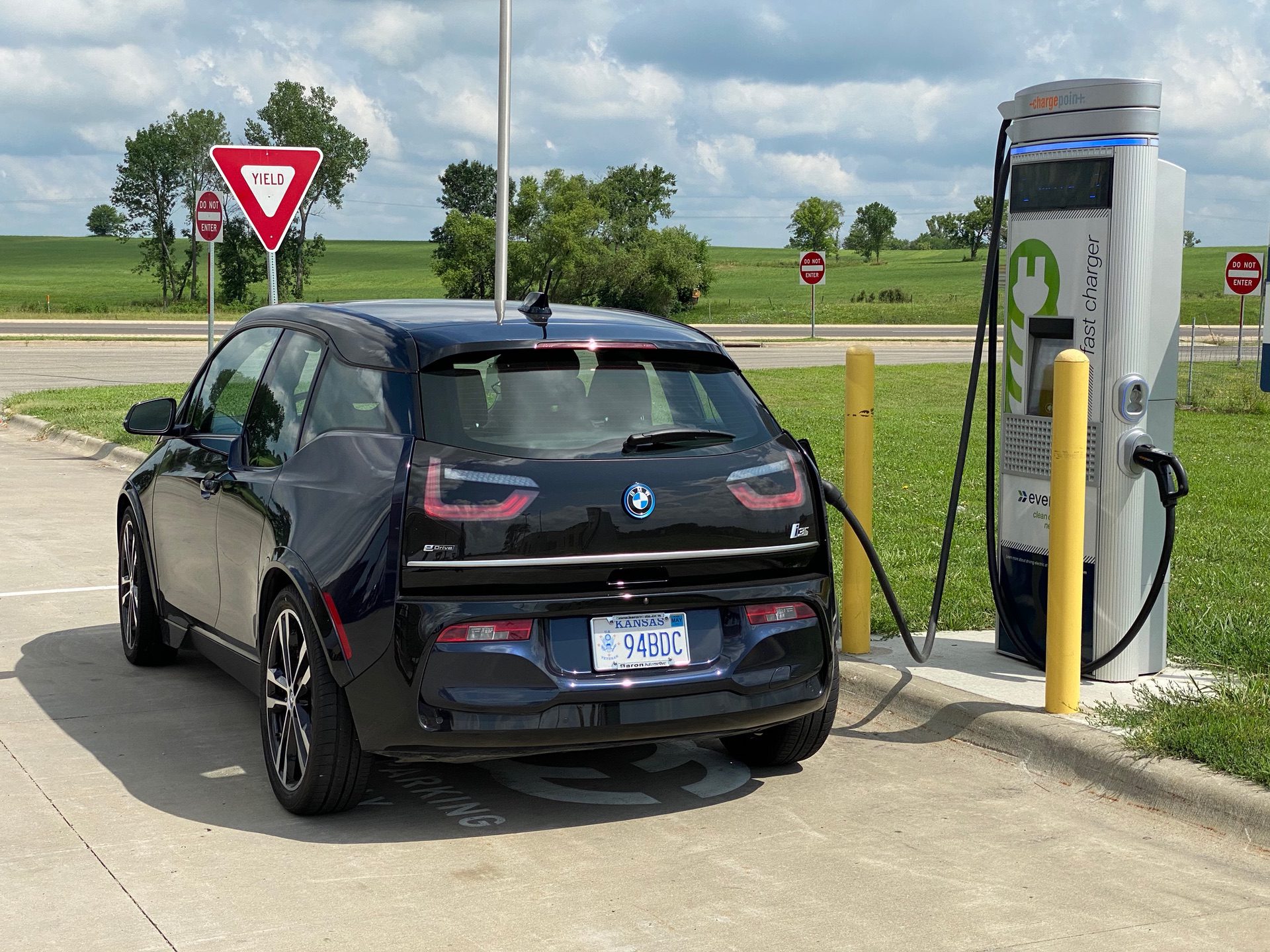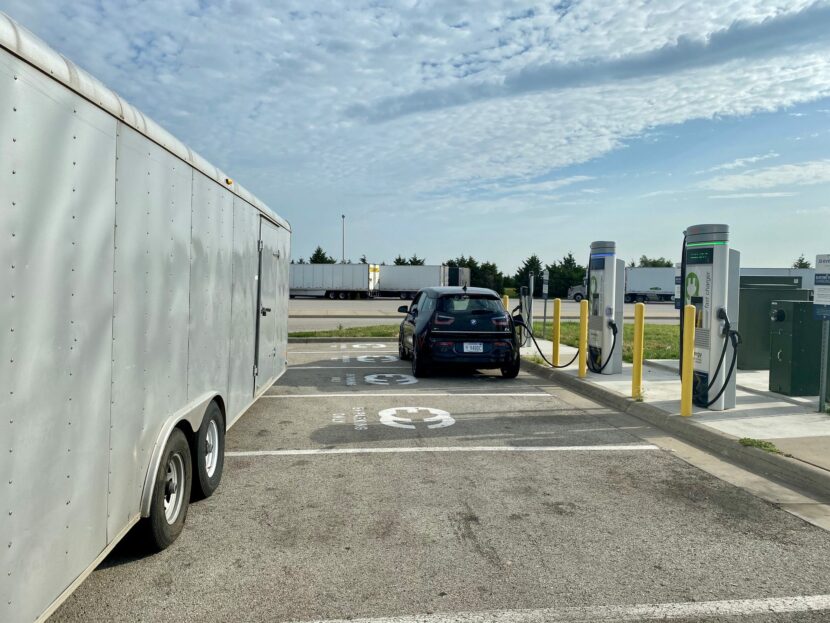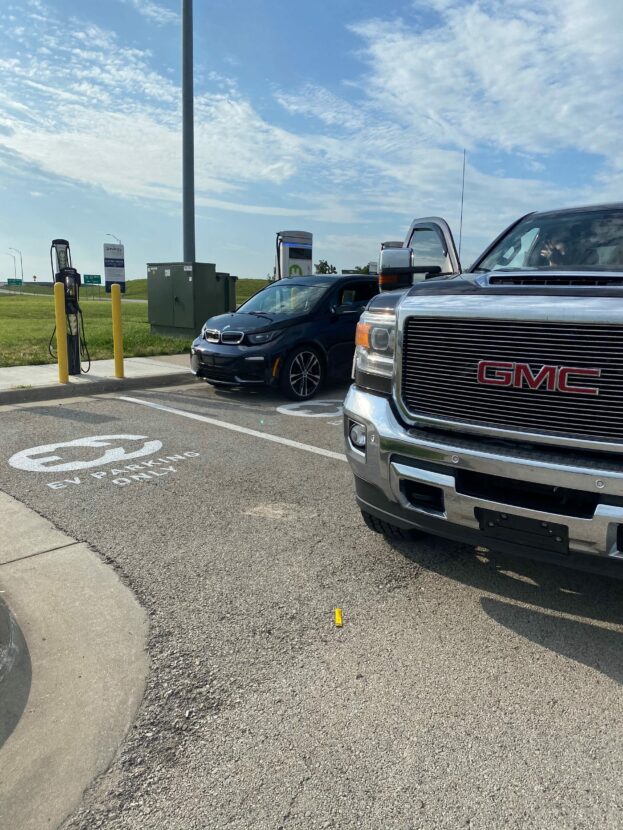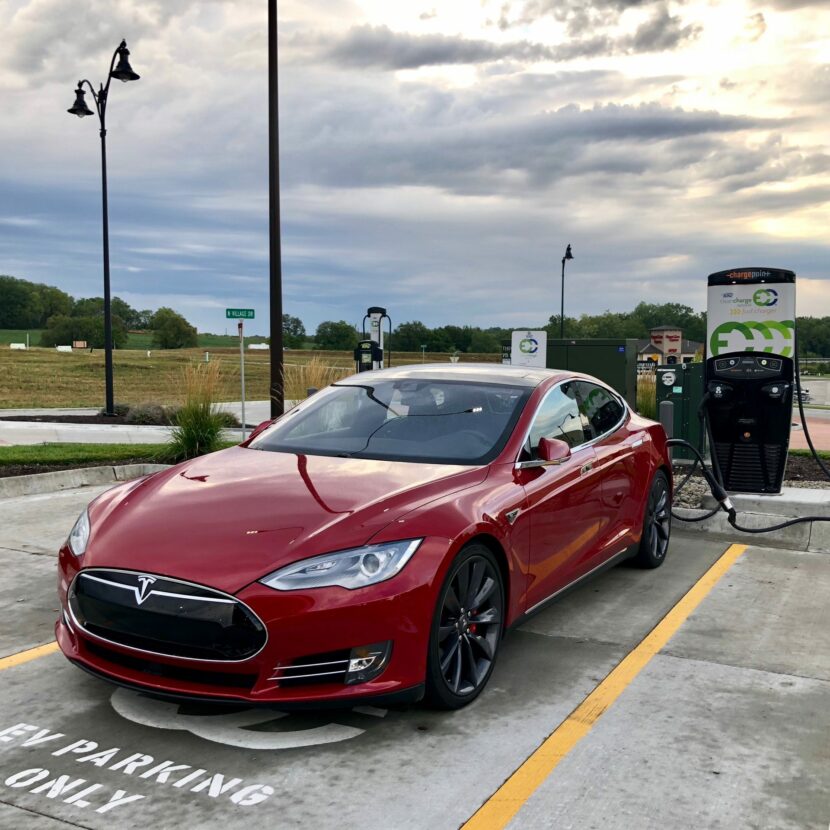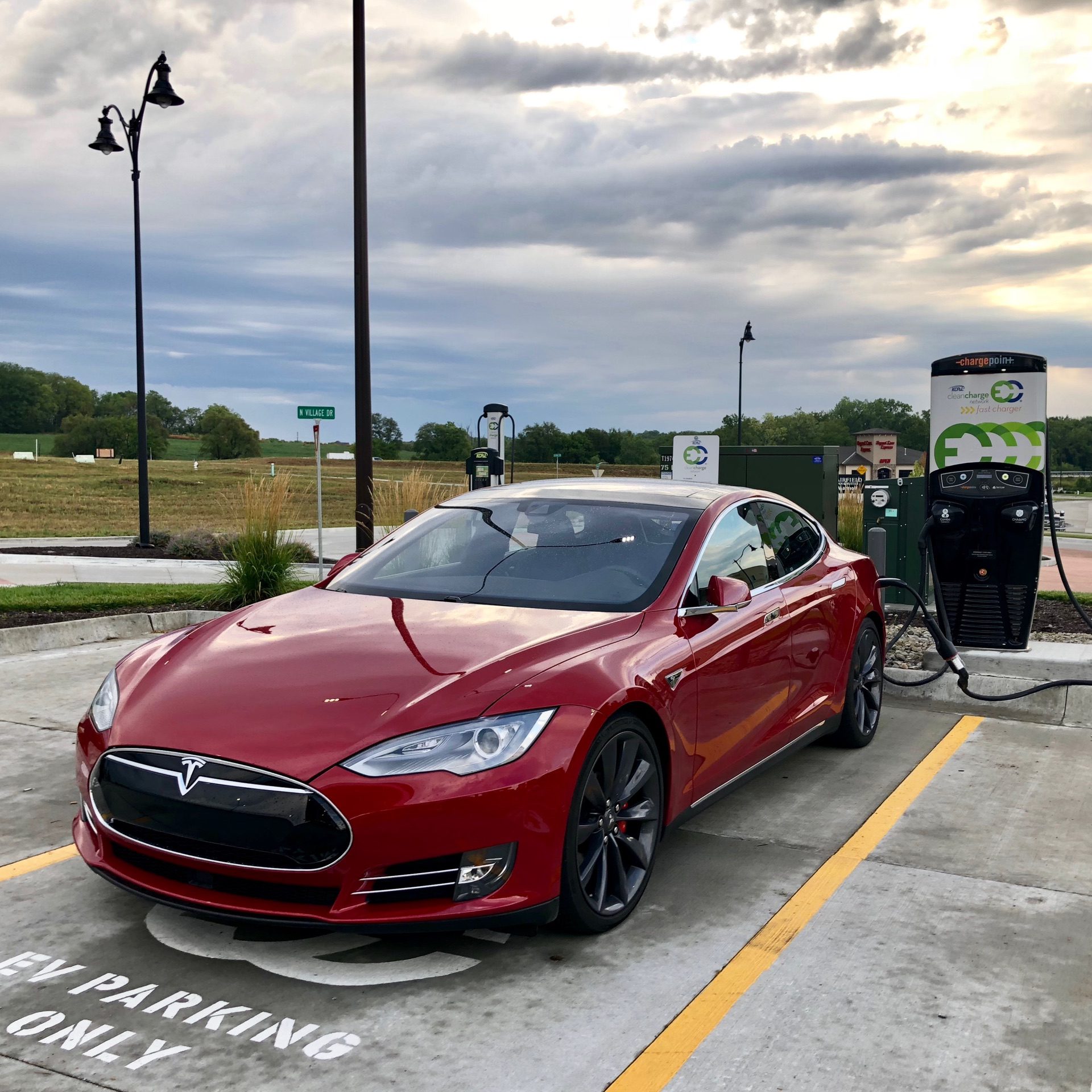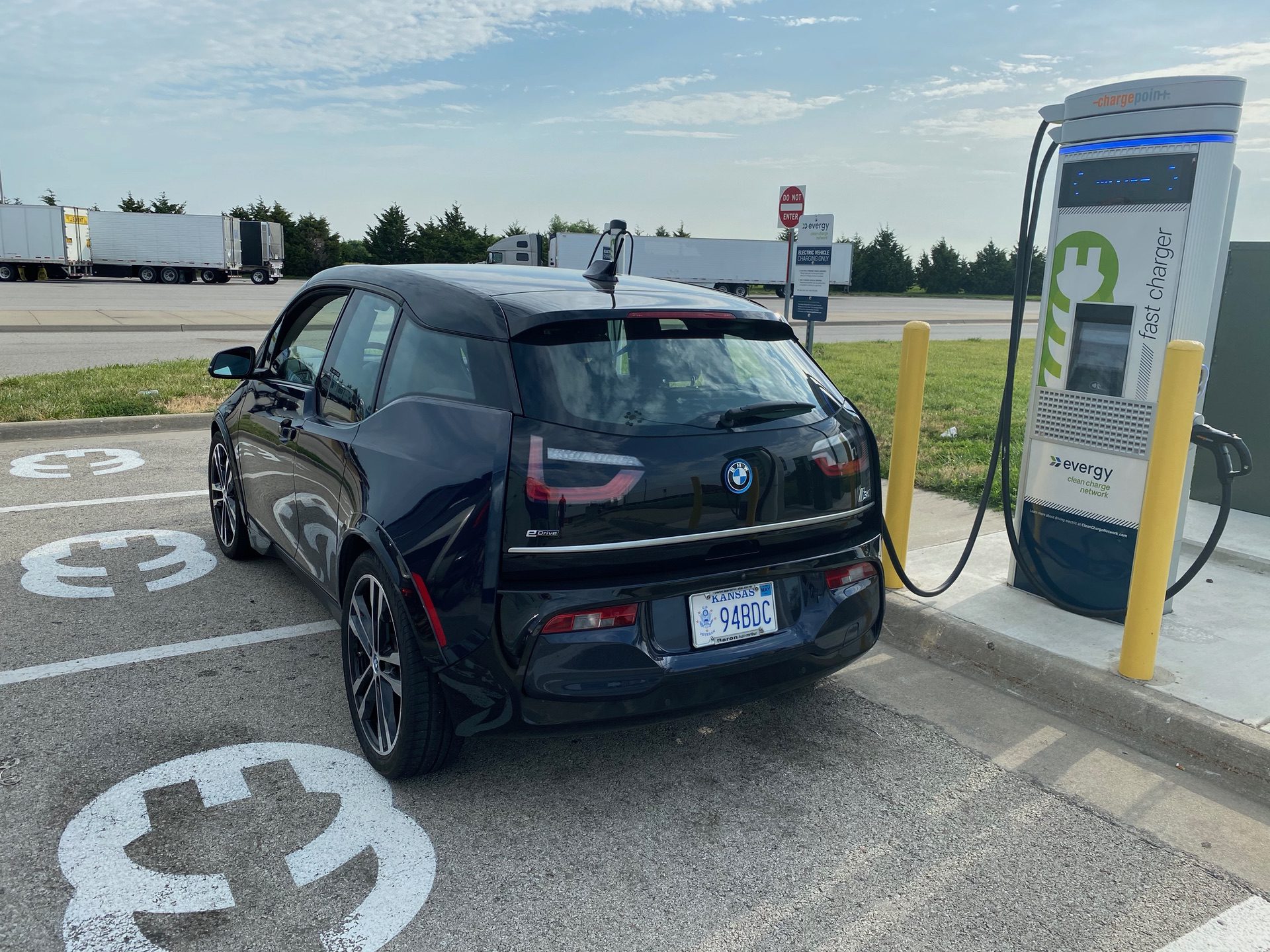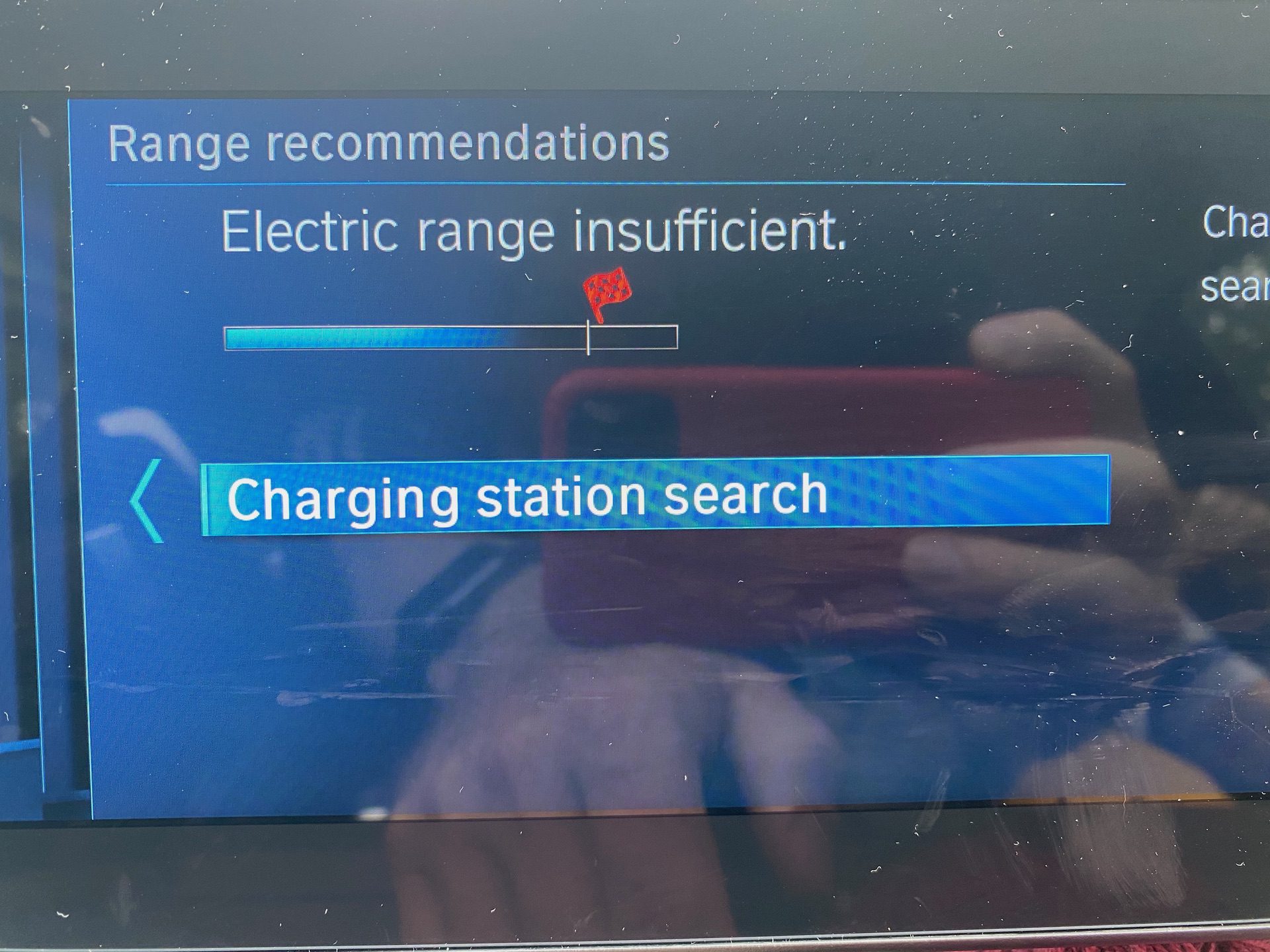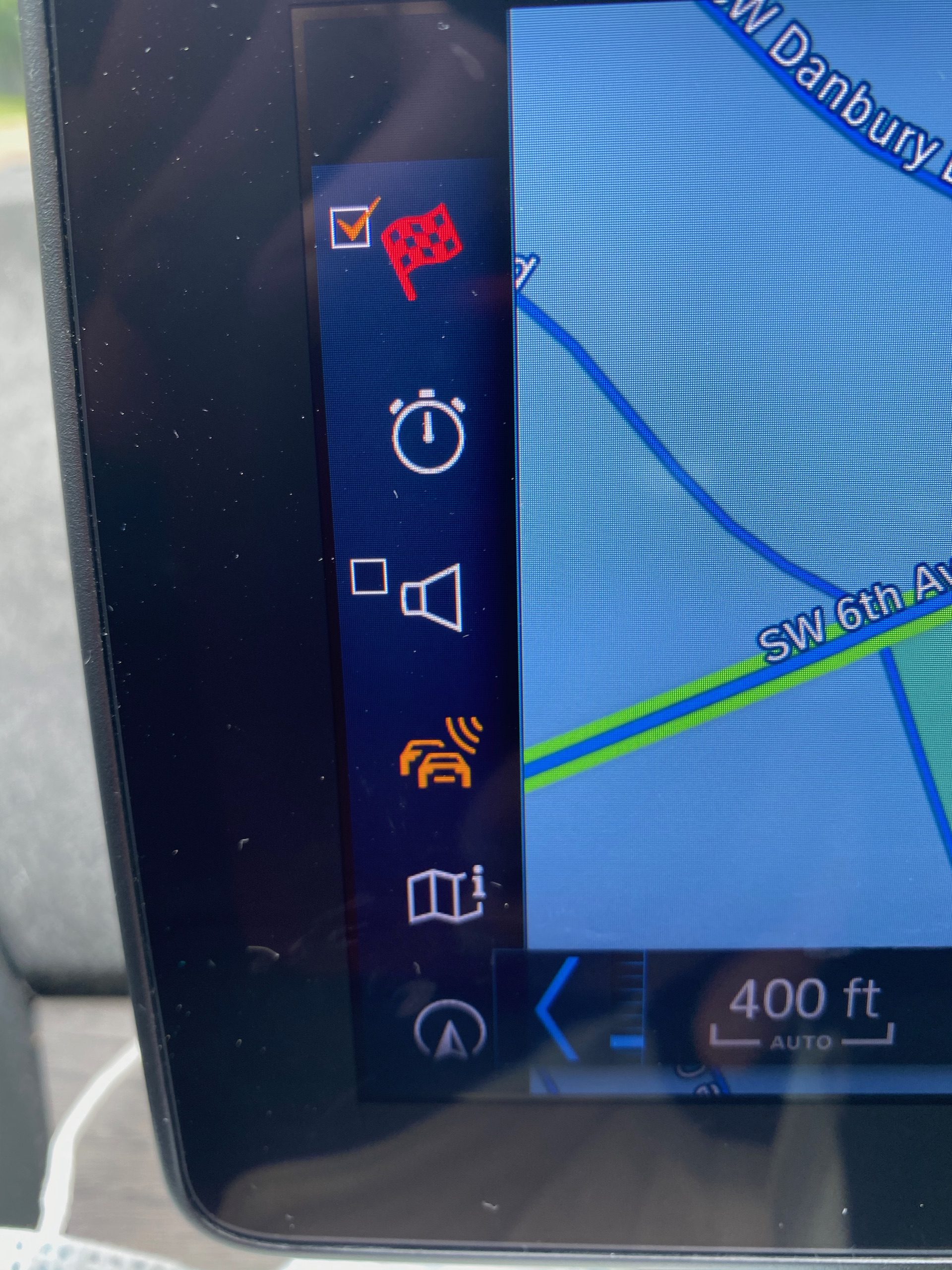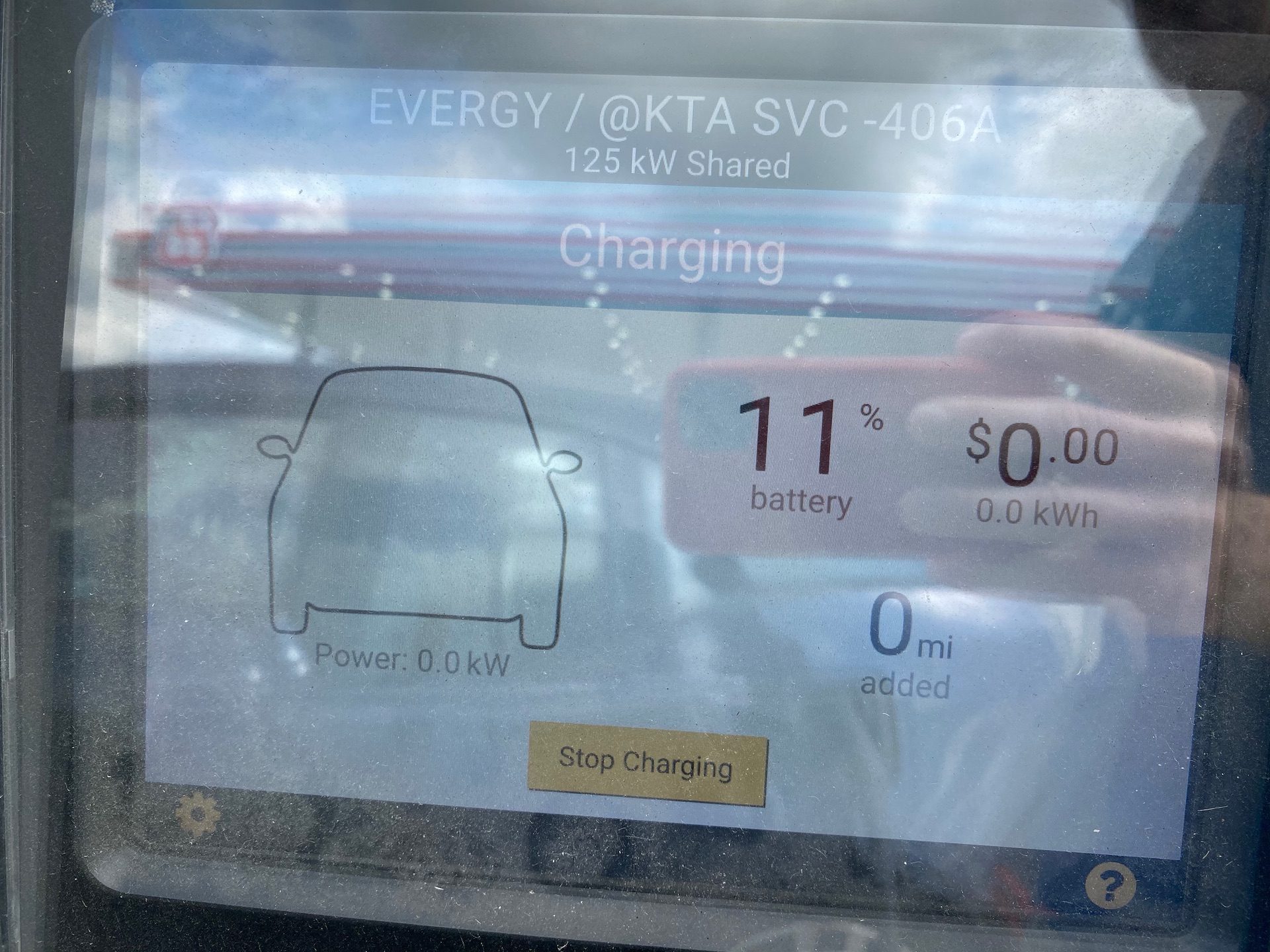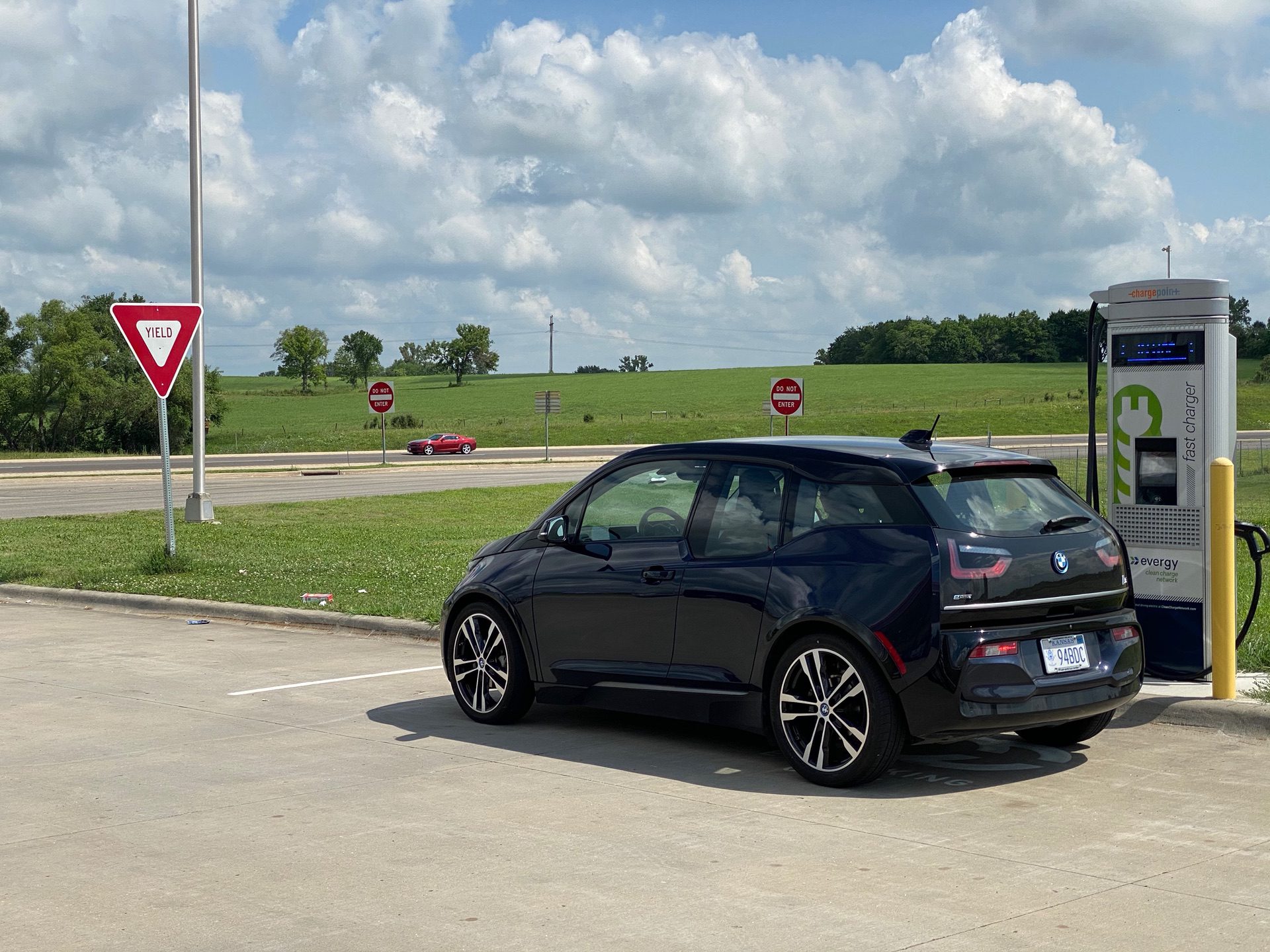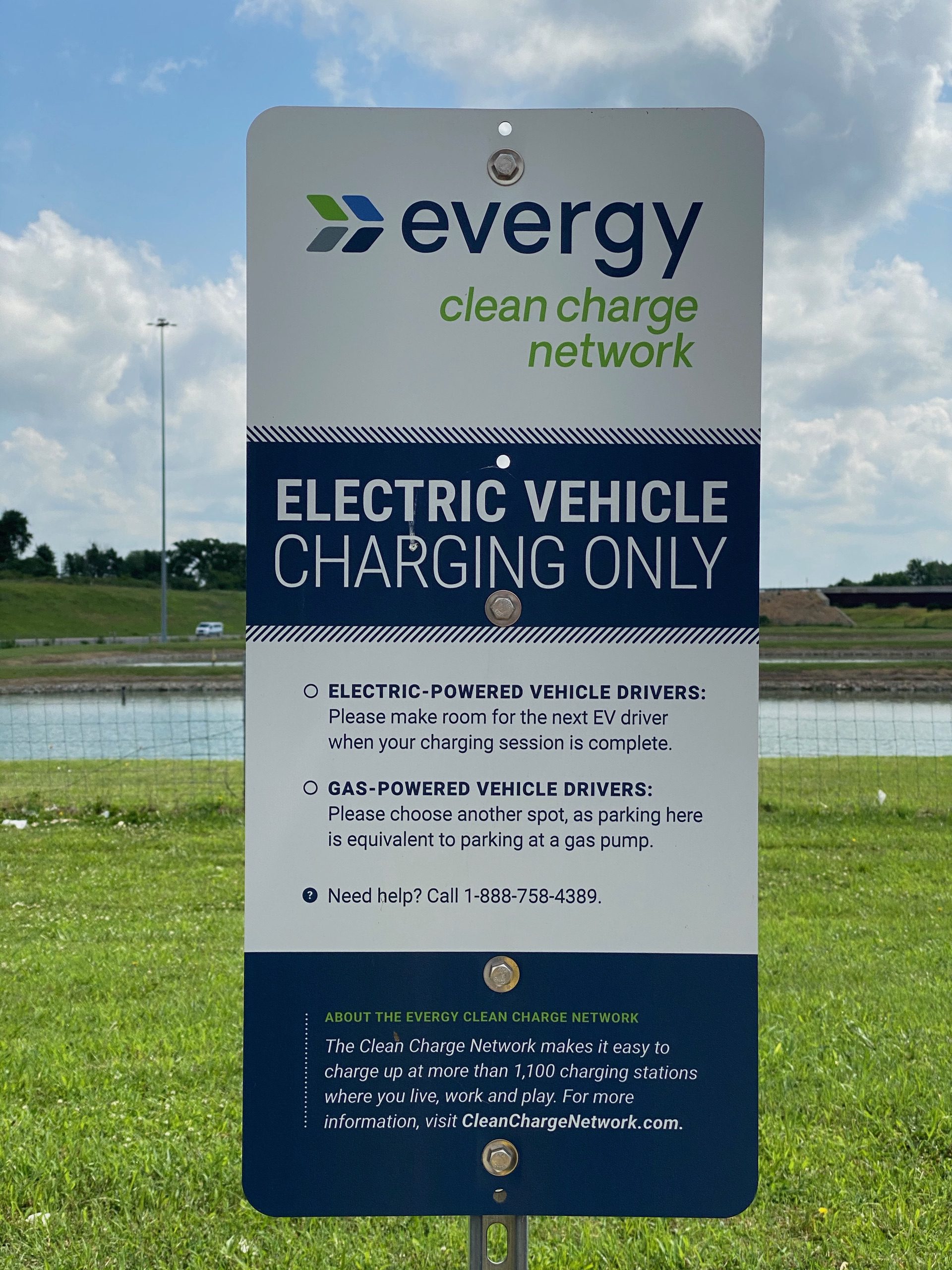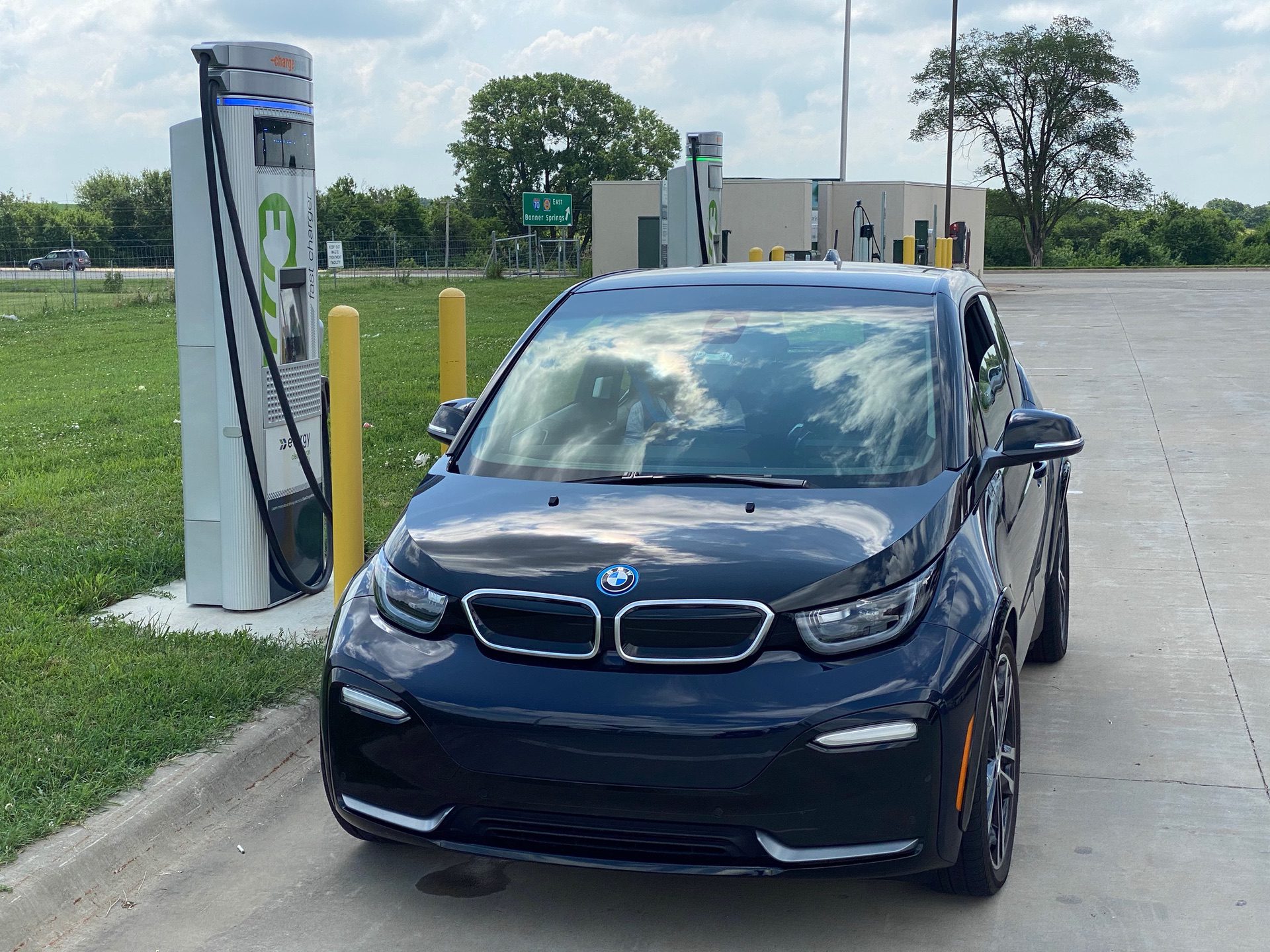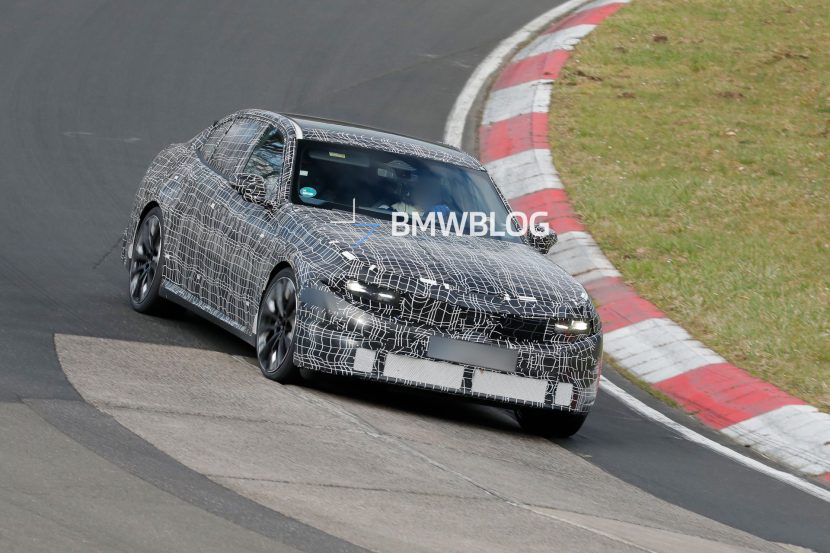Today I was on a 145 mile road trip in a 2018 BMW i3S, an electric vehicle with a range of 110 miles. This meant I absolutely had to charge the car during my trip. As I pulled off of I-70 for or our first DC Fast Charge, my heart sunk. There was a massive diesel-powered pick-up truck with huge trailer. Behind that trailer, there were two jet skis in tow! It must of been over 50 feet of truck and trailers “ICEing” the spots.
This rig took up an impressive eight – YES, eight parking spots including all of the EV chargers on the I-70 service island. It’s not that there wasn’t a place for large rigs to park, there were many as it was also a semi-truck stop.
As I pulled closer, I could see that there was enough of a gap to get our small BMW i3 behind the edge of the trailer. Because of the i3’s amazingly tight turning radius, I was able to run sideways up the parking spots and get to the DC fast EV charger.
Fortunately, this worked, and as I was plugging in the owner of this massive rig offered to move. It was a polite discussion. I was fine and he said he would be leaving soon. I was, however, charging while sideways across two EV charging spots, but did not plan to leave my vehicle unattended.
What Is ICEing?
“ICEing” is a term electric car drivers use to describe someone in an internal combustion engine vehicle blocking an EV Charging spot. It seems to be more common with trucks occupying EV Charging spots, but can be any vehicle really that isn’t charging. It would be akin to me parking our EV at a gas pump and just leaving it while shopping. The effect though is much worse for electric vehicles drivers as there are far fewer EV chargers than gas pumps.
At the I-70 Service Island where I got ICEd there are literally 24 gas pumps to 4 electric chargers. That did not even include the huge slew of diesel pumps on the other side of the store. If our electric vehicle charging spots get blocked, we have no other option other than to wait if we are low on range.
How to prevent ICEing?
At most EV charging sites there are signs just as this one where the truck was blocking all the EV chargers today. Common sense should prevent ICEing. And I am sure it does most of the time. Now, of course, some people might overlook or simply not pay attention to the posted signs, but there were plenty of instances where convenience preceded common sense.
Tesla Superchargers aren’t immune to ICEing either and some are also labeled for active charging only. In fact, Tesla will charge you an idling fee, if your Tesla model is occupying a spot without charging. This doesn’t work for conventionally cars. Rather, it is up to local municipalities to enforce ICEing issues and some are stricter than others. It is odd to me that the times I’ve seen ICEing, there has always been another open spot.
Read Also: BMW i3 vs Tesla Model 3 – A Head-to-Head Video Review
ICEing is an unfortunate reality electric vehicles drivers have to put up with. The impact on us can be from something of a minor inconvenience as mine, to a major problem when people do this at Hotel/Overnight Charging locations. I think it important to keep diplomatic interactions between the two sets of drivers as we all need to co-exist. Politely asking frequently works, or finding the owner of the property is a good start.
Some, but not all, municipalities have towing ordinances, but it seems to be the exception rather than the rule.
Have you been ICE’d? If so let us know what happened below.
Read Also: What Can I Fit In My BMW i3?


